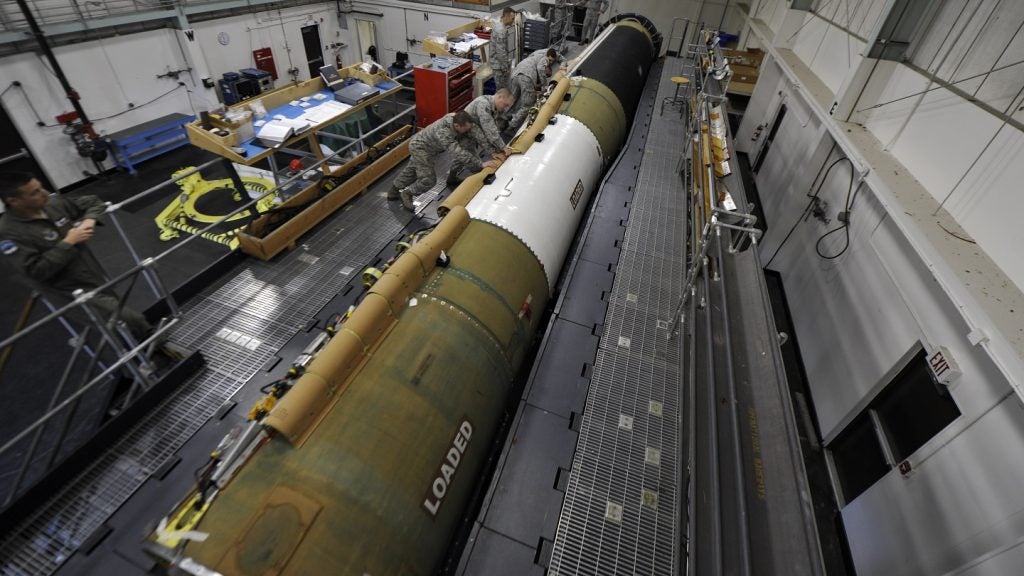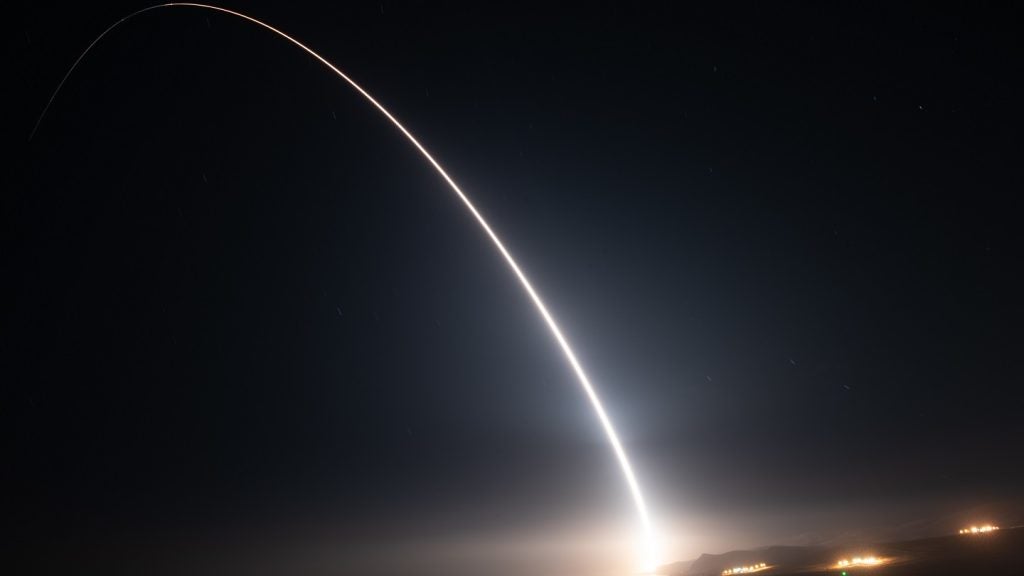Lockheed Martin has been awarded a near-$1bn contract to conduct engineering, manufacturing and design work to provide a “low technical risk and affordable” RV for the Mk21A programme, which will fit a new RV to the US’ Sentinel nuclear missile system.
Detailed in a 30 October contract announcement by the US Department of Defense, the sole source acquisition is expected to be completed by Q4 2039, with Fiscal 2024 research, development, test and evaluation funds in the amount of $26.6m being obligated at time of award. The US Air Force (USAF) Nuclear Weapons Center at Hill Air Force Base, Utah, is the contracting activity.
The USAF Nuclear Operations Center details that the LGM-35A Sentinel is replacing the ageing LGM-30 Minuteman III intercontinental ballistic missiles (ICBMs), which are housed in underground silos and form one element of the US nuclear triad.
The USAF states that the LGM-35A Sentinel (formerly Ground Based Strategic Deterrent or GBSD) weapon system is a “complete modernisation” of the land-based leg of the US nuclear triad.
US Sentinel ICBM: Mk21A and the W87-1
According to the USAF’s operational test and evaluation centre, the new RV will replace the existing Mk12A and is being run in conjunction with the US Government’s W87-1 programme, which will replace the ageing W78 warhead to maintain the effectiveness of the US’ ICBM capability.
Information sourced from the US Department of Energy details the course of the W87-1 programme, which conducted its first attempted feasibility study under Phase 6.2 in 2016, before a three-year pause only saw it restarted in 2019.
In FY2020–FY2021, the US National Nuclear Security Administration (NSSA) evaluated warhead technologies, progressed maturity of select technologies and conducted feasibility studies of design options, among other required processes, ahead of early system test and qualification planning.
According to the NSSA, the W87-1 is based on previously tested nuclear components and will include an insensitive high-explosive primary that includes “advanced” safety features. Despite this, the W87-1 will not provide the US with new nuclear military capabilities, rather serving to improve safety and security measures around the system.
Outlining the move of the W87-1 programme into Phase 3 earlier this year, the Lawrence Livermore National Laboratory – which is tasked with ensuring the safety, security and effectiveness of the US nuclear stockpile – stated that the W87-1 is slated for deployment in the early 2030s.

RVs are integrated into the upper stage of an ICBM and can house the nuclear warheads that form a country’s national nuclear deterrent.
The predecessor to the Minuteman III missiles, the US’ LMG-118A Peacekeeper ICBM carried ten nuclear weapons in its Multiple Independently Targetable Re-entry Vehicle warhead. The warhead was part of the missile's fourth stage, which consisted of the deployment module, ten cone-shaped Avco Mk-21 RVs and an aerodynamic shroud.
Each Mk-21 held a nuclear weapon and was covered with a heat shield to protect it during re-entry into the atmosphere.
The deployment module, or "bus", carried the Mk-21s and housed the electronics that released the RVs. When deployed from the bus, each weapon followed a separate ballistic path to its individual target. The US eliminated Peacekeeper ICBMs as part of the Strategic Arms Reduction Treaty II, and the last one was retired from alert in 2005.









